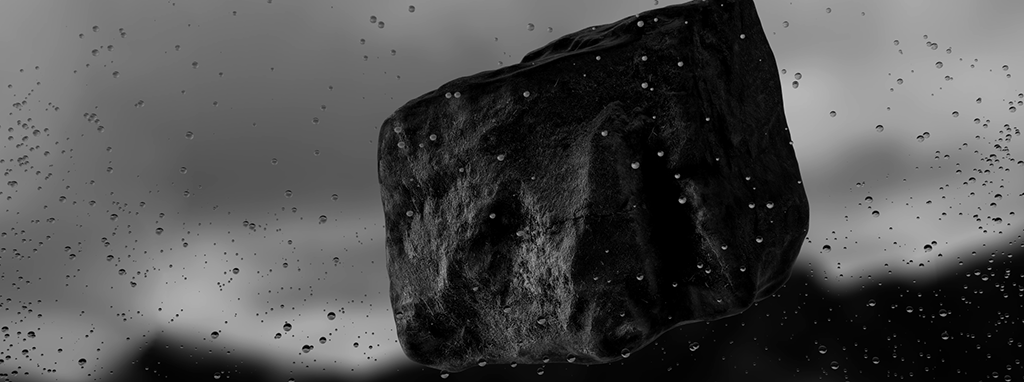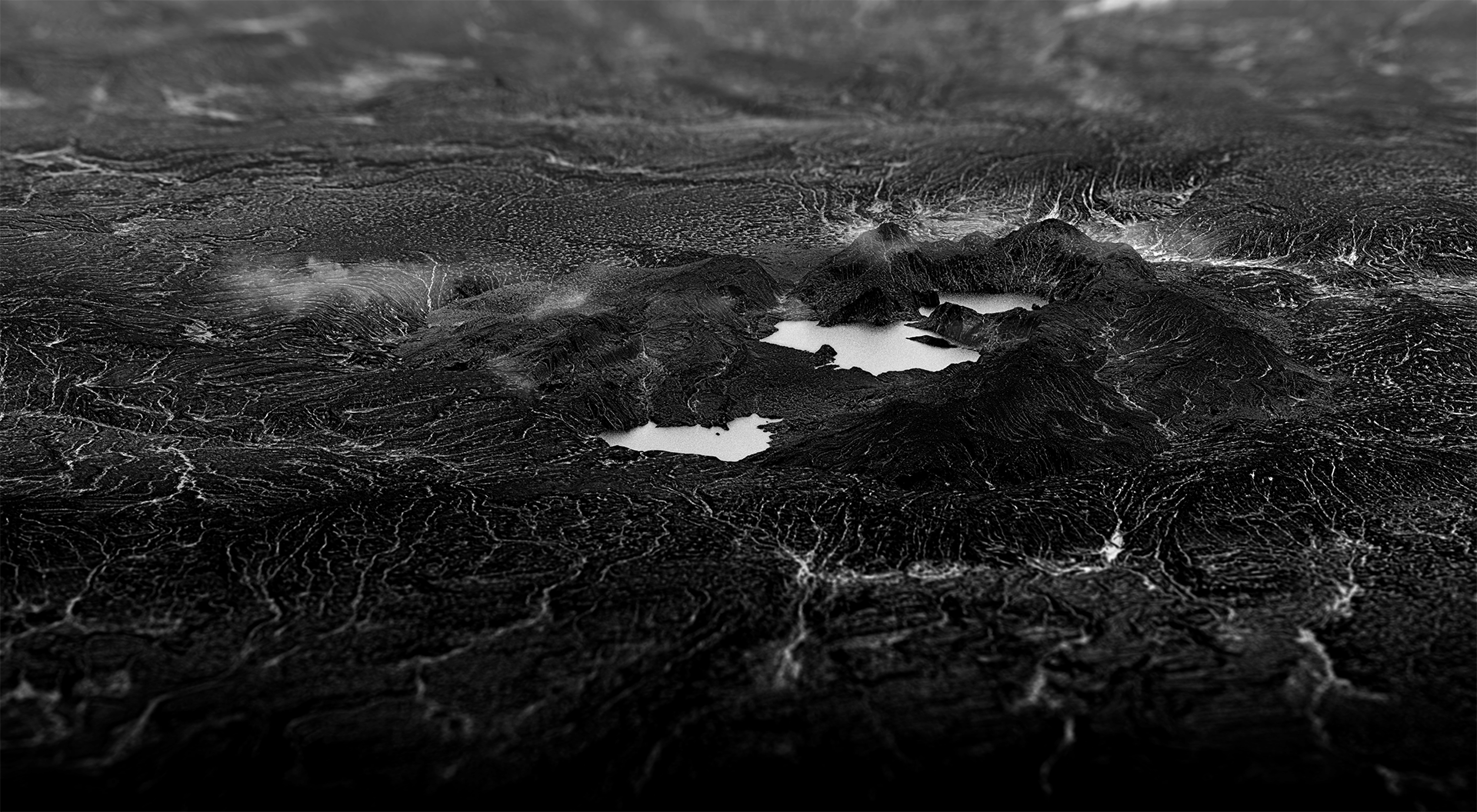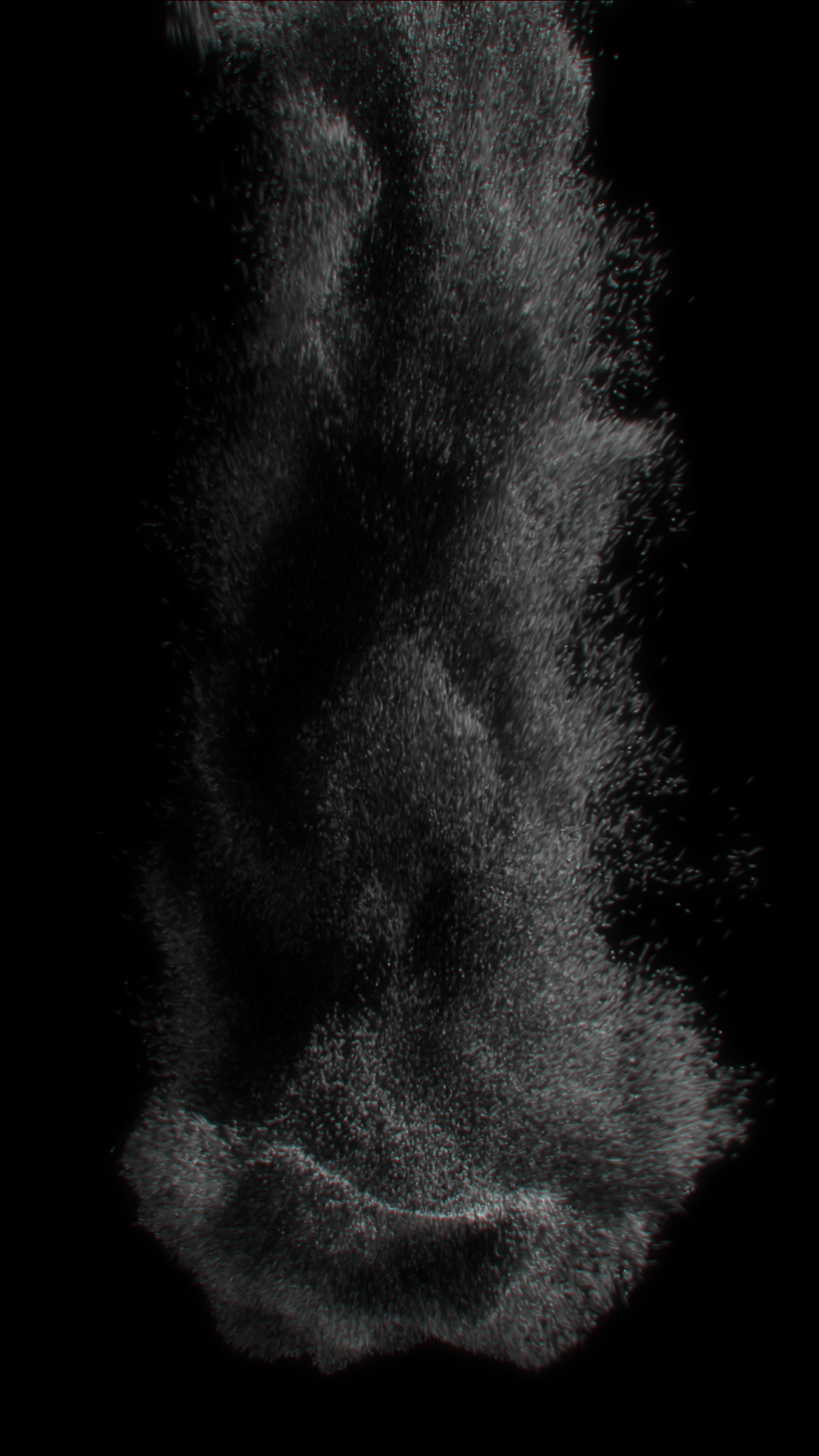001
2022
001
2022
2022
Lagunas is a fictional & interactive installation, a triptych between memory, death, and water. Prehistoric landscapes are the scenario for the chronicles of a drowning man, disclosing the rarity of water on Planet Earth.
Lagunas is dark, still, and somber. Silent landscapes, dying fish, the water of a thick dark lake, seaweed and mud cover the depths. Below the surface, a man drowns. From the abyss, archaic rocks are attracted by magnetic forces. Drilling machines emerge, turning between the cliffs, intercepting the stones in levitation and destroying the rocks, which fall back into the water. The abandoned body of the man, receives the impacts of the stones, wakes up, strives to save his life, and loses consciousness…
The drilling machines embody the hydraulic fracturing techniques used to extract fossils fuels from the shale rock of the Earth. The water contamination process consequence of the hydraulic rupture is visualized from close-up animations to larger-scale images where the fracking fluid travels through the pipelines reaching the groundwater. High-pressure impulsions cause the nearby shale rock to crack, creating fissures where fuels flow into the surface of the Earth, while rests of toxic fluids contaminate the water of the subsoil of the Earth.
Three water valves are used in Lagunas as interactive devices. When the water valves are rotated, image and sound are activated. Further than interacting with image and sound events, the level/amount of interaction of the participants is continuously analyzed. An interactive scenario adapts to the behavior of the spectators, allowing variations and deviations on the fictional order. The water tabs are used all along the experience as triggers & controllers for the interactive scenario of the installation.
The lakes and mountain landscapes have been shoot in Colombia, in the “Chingaza Natural National Park”, a natural reserve located in the Eastern Cordillera of the Andes, in the northeast of Bogotá. The underwater images were filmed in a lake in the Netherlands, using a high-speed cinema camera (Phantom-Flex) and shoot at 300fps. The landscapes & underwater images are composited with 3D (CGI) generated images.
Description from the artist’s website: Lagunas | Laura Colmenares Guerra (ulara.org)


